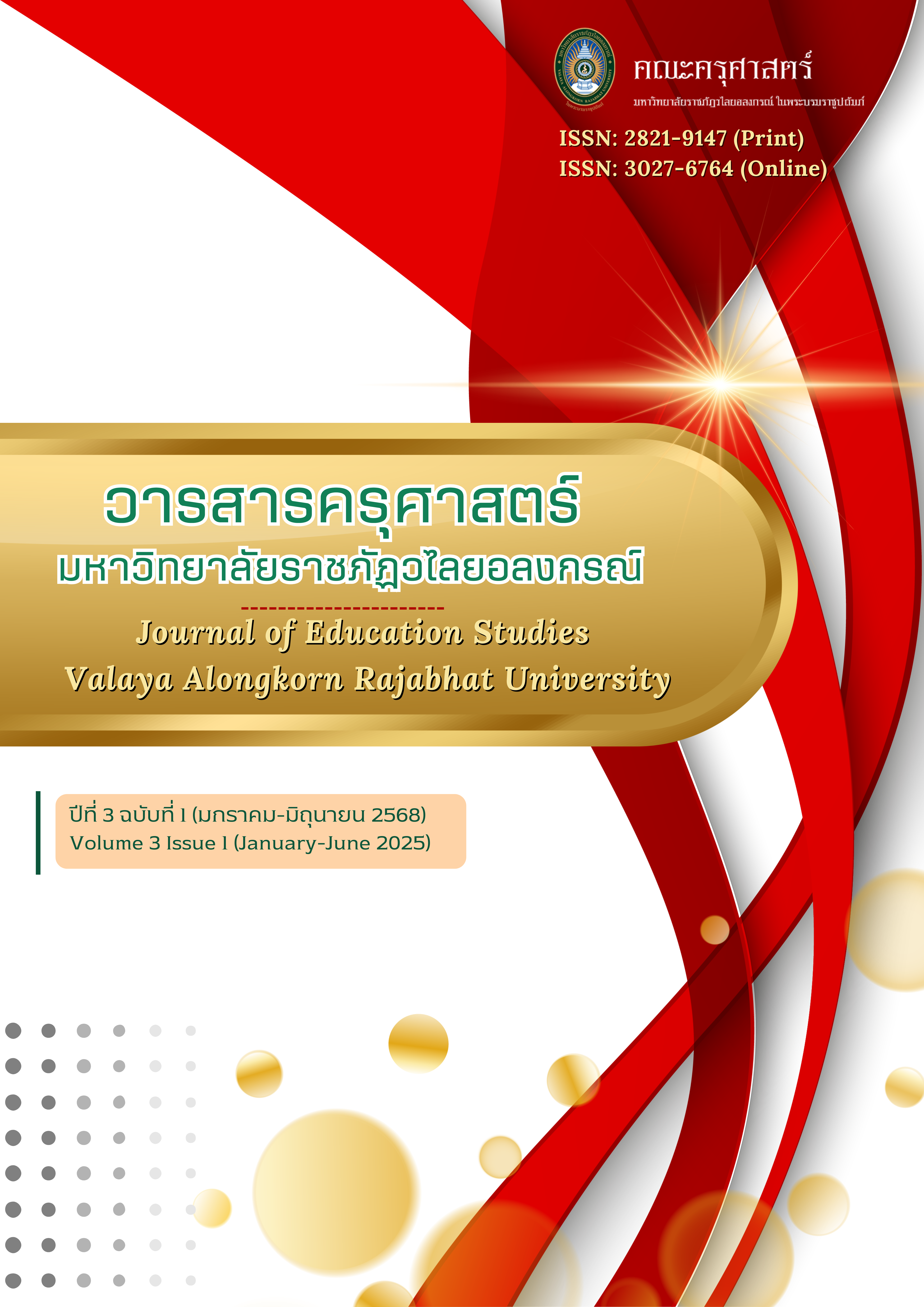Digital Learning Design to Promote Geographic Literacy for Primary School Students
Keywords:
Geographic Literacy, Digital Learning Design, CIPAC Model, Primary School StudentAbstract
This academic article aims to present knowledge on (1) the concept of geoliteracy in the context of 21st century education, (2) an integrated digital media learning approach to promote geoliteracy for elementary students, and (3) the design of digital learning by applying the CIPPA Model to develop essential geoliteracy skills for learners. This article aims to present a digital learning design approach to develop geoliteracy for elementary students using the CIPPA Model framework, which emphasizes interactive learning between learners, teachers, and digital media through the integration of Socratic questioning techniques to stimulate analytical thinking and geographic reasoning. The expected outcomes are the systematic development of learners’ geoliteracy skills and the promotion of learners’ ability to apply their knowledge to solve social and environmental problems sustainably.
In this study, the concept and components of the CIPPA Model were analyzed to consider the feasibility of applying it for learning management in the context of modern education, combined with questioning, resulting in a 5-step learning management design using the CIPAC Model, focusing on the learning process that promotes analytical thinking and the critical use of technology. This article presents an approach to learning design that will help develop learners' digital literacy, and discusses suggestions for applying the concept to learning.
References
กนก จันทรา. (2561). การรู้เรื่องภูมิศาสตร์: ถอดบทเรียนประสบการณ์การจัดการเรียนรู้ภูมิศาสตร์ในชั้นเรียนที่เสริมสร้าง การรู้เรื่องภูมิศาสตร์. กรุงเทพฯ: จุฬาลงกรณ์มหาวิทยาลัย.
ทิศนา แขมมณี. (2555). ศาสตร์การสอน: องค์ความรู้เพื่อการจัดกระบวนการเรียนรู้ที่มีประสิทธิภาพ (พิมพ์ครั้งที่ 15). กรุงเทพฯ: จุฬาลงกรณ์มหาวิทยาลัย.
ประภัสสร ปรีเอี่ยม. (2561). การพัฒนาการบริหารจัดการเพื่อเพิ่มโอกาสทางการศึกษาของนักเรียนที่มีความต้องการพิเศษ สำนักงานเขตพื้นที่การศึกษามหาสารคามเขต 2: บุพปัจจัยและผลลัพธ์. วารสารคณะครุศาสตร์ มหาวิทยาลัยราชภัฏมหาสารคาม, 1(12), 43-67.
ราชบัณฑิตยสภา. (2562). พจนานุกรมศัพท์ศึกษาศาสตร์ร่วมสมัยชุดความฉลาดรู้ (literacy). กรุงเทพฯ: อรุณการพิมพ์.
วรินทร สิริพงษ์ณภัทร. (2566). การตั้งคำถามแบบโสเครติส การคิดอย่างมีวิจารณญาณการจัดการเรียนรู้. วารสารศึกษาศาสตร์ มหาวิทยาลัยศิลปากร, 51(1), 29-30.
สมศักดิ์ สุนทรพิพิธ. (2562). ภูมิศาสตร์และการพัฒนาทักษะทางภูมิศาสตร์ในศตวรรษที่ 21. กรุงเทพฯ: มหาวิทยาลัยธรรมศาสตร์.
สำนักวิชาการและมาตรฐานการศึกษา สำนักงานคณะกรมการการศึกษาขั้นพื้นฐาน. (2560). แนวการจัดกิจกรรมแนะแนวตามหลักสูตรแกนกลางการศึกษาขั้นพื้นฐาน พุทธศักราช 2551. กรุงเทพฯ: โรงพิมพ์ชุมนุมสหกรณการเกษตรแห่งประเทศไทย.
สิริรัตน์ พงศ์พิพัฒนพันธุ์. (2559). การพัฒนาการเรียนการสอนรายวิชาภูมิศาสตร์เพื่อรองรับโอลิมปิกวิชาการ. วารสารภูมิศาสตร์ สมาคมภูมิศาสตร์แห่งประเทศไทย, 44(2), 32–50.
Association of American Geographers. (2016). Geography for life: National geography.
Cambridge International. (2021). Digital technologies in the classroom. Retrieved from https://www.cambridgeinternational.org/images/271191-digital-technologies-in-the-classroom.pdf
ESRI Schools and Libraries Program. (2003). Geographic inquiry: Thinking geographically. Geography, 116(1), 2-8.
Graham, C. R., Allen, S., & Ure, E. (2003). Blended learning environments: A review of the research literature. [Unpublished manuscript]. Provo, UT.
Horton, W. K. (2007). Exploring the challenges of developing digital literacy in the context Retrieved from https://ncge.org/wpcontent/uploads/2021/06/Geography_for_Life_2ndEd.pdf
International Society for Technology in Education (ISTE). (2016). ISTE standards for students. International Society for Technology in Education. Retrieved from https://www.iste.org/standards
Ministry of Education. (2008). The Development of Education: National Report of Namibia by Ministry of Education. In 48 Session of Ministry of Education Conference on Education Inclusive Education: The Way of the Future. Ministry of Education. National Geographic Education.
National Geographic Society. (2018). Components of geographic literacy of special educational needs. In S. Andretta (Ed.), Change and challenge: Information literacy for the 21st century (pp. 115-144). Adelaide, Australia: Auslib Press.
Pennsylvania Department of Education (2002). Academic standards for geography. Pennsylvania Department of Education. research literature. [Unpublished]. Provo, UT. Retrieved from https://url.in.th/WZJKk
Stroud, R. J. (2017). Geographic literacy: What it is and why it matters. Retrieved from www.cambridgeinternational.org
Suwanvej, K. (2015). Development of teaching and learning models to promote geography teaching competencies for Professional Social Studies Teacher Students [Doctoral dissertation, Silpakorn University].






